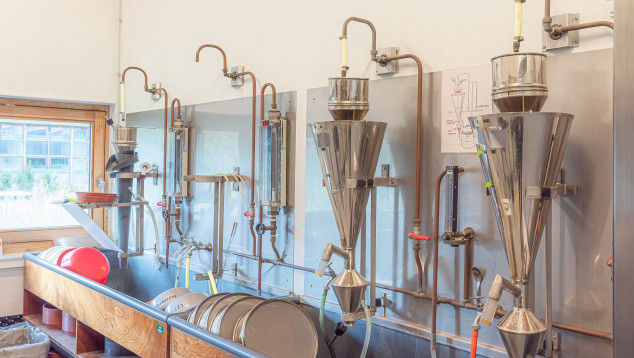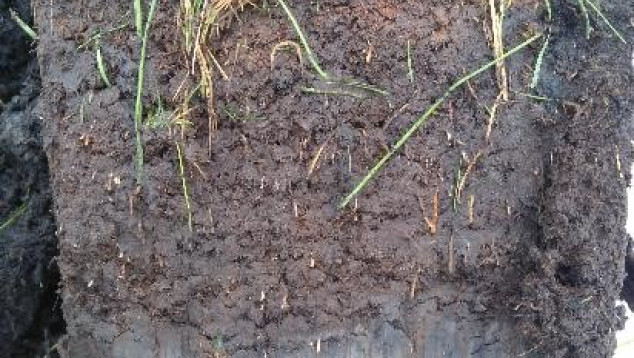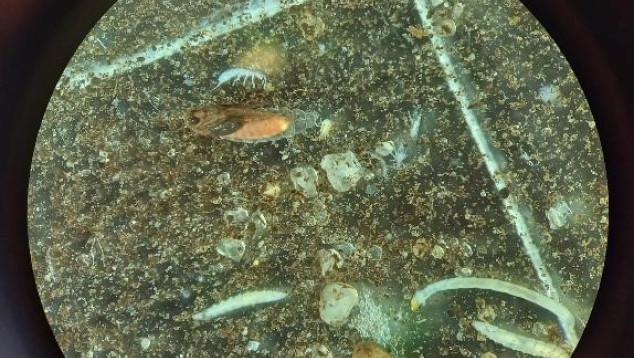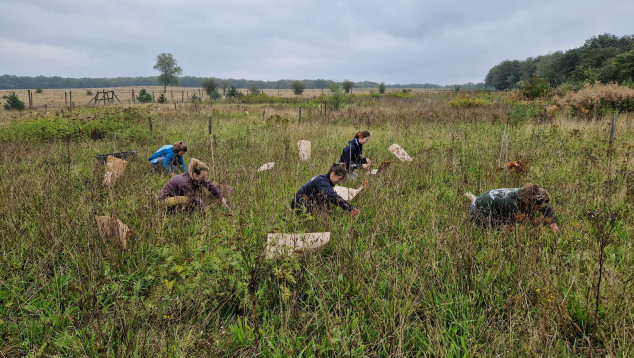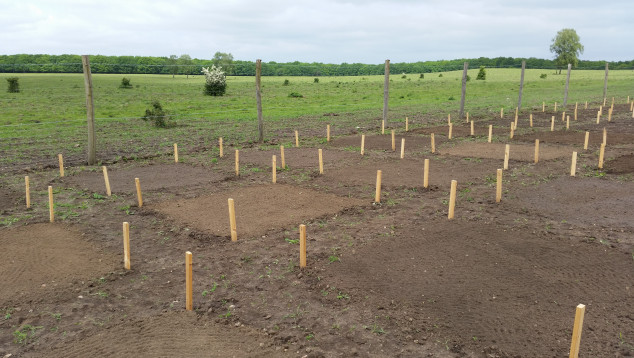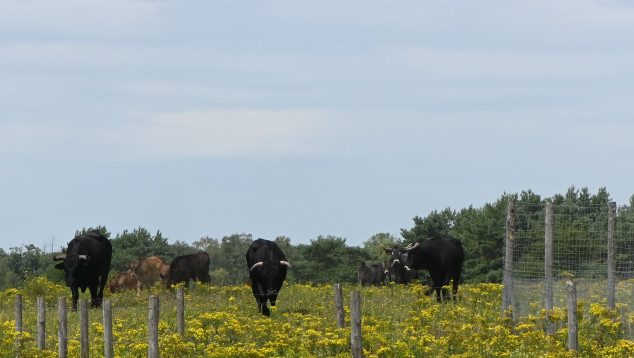Soil ecology runs deep
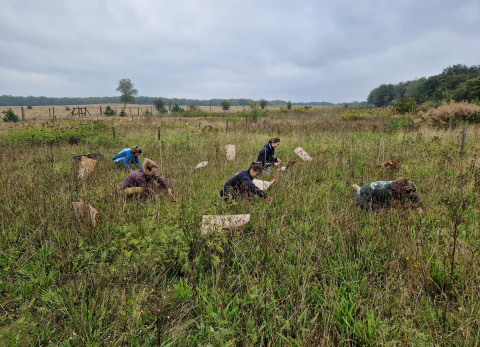
Soil ecology runs deep
For a long time, the soil was the domain of chemistry and physics. This only changed forty years ago. Then attention also started to be paid to the biology and ecology of soils. Today, the soil has become a large and indispensable field of research. The Netherlands Institute of Ecology (NIOO-KNAW) has been uncovering the role of soil life for a healthy underground and aboveground ecosystem for several decades. Soil life also contributes to nature restoration, for example through soil transplantation and tackling invasive plants.
The essential role of soil life for soil health is widely known today. But until the mid-1980s, soil research mainly revolved around chemical and physical factors and applying that knowledge in agriculture. What research there was on soil life was mostly about diseases and pests and biological nitrogen fixation. With the 1985 Spearhead Programme on Soil Biology, biological and ecological soil research received a boost.
Marram grass and nematodes
At the Institute for Ecological Research (IOO) in Heteren, one of the forerunners of today's NIOO, the Department of Soil Biology was established around 1985. Also at the Weevers' Duin research centre of the IOO (1957-1990), researchers worked on soil ecology, especially in the dunes of Voorne. Here, they initially looked at nitrogen fixation in alder and buckthorn, and later at soil diseases in marram grass, and mycorrhizal fungi in fleaworts. Among other things, it turned out that pathogenic fungi and plant-parasitic nematodes played a role in whether or not planted marram grass on seaward dunes took root.
Soil inhabitants and their functions
To understand the functions of soil life, it is important to look broadly and include the role of the whole “team soil”. So including those of springtails, mites, insect larvae, woodlice, potworms and nematodes, for example. They regulate other species groups by eating them or by converting dead plant remains into absorbable nutrients. The microorganisms include many species of fungi and single-celled organisms such as protozoa and bacteria. Some of the soil life is active as pathogens, grazers or symbionts (collaborators). They are all important, even the grazers and soil pathogens. Because if all plants could grow unrestrained, nature would consist of only a limited number of plant species; mainly the fastest and most competitive growers. Thanks to soil life, there is also room for slow-growing plant species, and these are precisely the species that increase species diversity in nature.
Soil life: astronomical numbers
Some five to 10,000 species of soil organisms can occur under a square metre of grassland or forest floor. The total number of individuals is much higher still. Most of them are microorganisms. In a gram of soil - about a teaspoon full - there are more than a billion bacterial cells and a hundred metres of fungal hyphae.
The combined activity of these micro-organisms is enormous. They convert more than a large truckload of organic matter in a soil the size of a football field every year. The nutrients from this, like nitrogen and phosphate, become available to plants. Pathogenic microorganisms cover only a small part, but they determine species diversity and also the rate of vegetation changes. This is because they inhibit the growth of competitive plant species.
Planken Wambuis
Planken Wambuis is not just a beautiful nature and recreation area of Natuurmonumenten on the Veluwe. Since 1996, it has also been a special open-air laboratory where NIOO, and now other research institutes, conduct research into the role and development of soil life in nature. NIOO's research fields are at the former agricultural enclave De Mossel. There and also elsewhere on Planken Wambuis are decommissioned fields. Because these fields have been returned to nature in varying years, they are a kind of time machine. In about 30 fields, we can follow the vegetation development going back almost half a century. By sampling the soil, the NIOO also tracks changes in soil life. De Mossel has proved to be an ideal location to investigate how we can promote nature restoration. The experiments started under the banner of the European Union-funded international research project CLUE (Changing land use: enhancement of biodiversity and eco-system functioning) to monitor the development of biodiversity on former agricultural land in a number of countries. In the Dutch trial plots of the CLUE trial field, vegetation development was accelerated by sowing wild plants that would otherwise take years to reach this site naturally. Soil transplantation was also tested on the trial field. In this process, a thin layer of soil including soil organisms from a nearby older donor natural area is spread onto the field.
Similar trial fields have been set up at Lund (Sweden), Reading (UK), Ceske Budejovice (Czech Republic) and Salamanca (Spain), but those trials were stopped after some time. Only the Dutch CLUE trial field still exists, having been maintained in 1998 after the European project ended. The trial field serves as inspiration for new generations of research projects.
Soil transplant
Our research at Planken Wambuis made it clear that there is a direct link between nature restoration and soil. A typical agricultural soil community consists of relatively many bacteria, few fungi and many herbivorous nematodes. In contrast, under natural grassland there is a relatively high prevalence of fungi. An important question we have asked ourselves in recent years is whether and how we can change the soil and soil community in such a way that nature can develop more rapidly on former agricultural land.
One method that is proving successful is transplanting soil from a well-developed nature area to a newly developing one. The small-scale experiment at the CLUE trial field showed that a bit of soil from the Mosselse Veld nature reserve, a few kilometres away, promoted vegetation development on the former agricultural land. It took about seven years before the effect became visible. The composition of the nematodes in the soil also changed. Soil transplantation is therefore a process that does take a long time.
It is a well-known phenomenon that marram grass grows well if the plants are annually overrun with sand blown by the wind from the beach to the dunes. Research showed that fresh sand allows the plant to escape pathogenic fungi and nematodes. Plant species that naturally succeed marram grass, such as rush-leaved fescue and sand sedge, were found to be more resistant to the soil diseases of marram grass, but subsequently developed soil diseases of their own. It thus became clear how in nature soil diseases affect vegetation succession.
Suitable after excavation
In scaling up soil transplantation by Natuurmonumenten on the former Reijerscamp agricultural plot, it turned out that the effects of soil transplantation become visible faster if the top layer of soil is excavated first. Removal of topsoil is a common measure. Because the phosphate content of agricultural soils is often extremely high, it hinders good natural development. Often, after removal of the top layer, a plain of white sand remains in which nothing can grow. Such a soil with no soil community is very suitable for soil transplantation.
At Reijerscamp, topsoil was removed at five sites of about five hectares each in 2006. Soil containing soil organisms and seeds was then collected from a 30-year-old heather-poor grassland and a heather shrubland field. The soil from both soils was spread on the excavated pieces of land using a manure spreader. At the five sites, grass clippings from both vegetation types were also spread to introduce seeds of the desired plant species. Transplants were also carried out on patches where no soil was excavated. The results were amazing, especially on the excavated patches where soil transplants were applied. Within five to eight years of construction, a beautiful heathland community and even a heather-poor grassland vegetation had emerged, while the excavated soil without transplantation still looked like a desert landscape. On the unexcavated areas, the transplants did not work as well.
The large-scale study now provides a good alternative to the conventional but often unsuccessful method of restoring nature on former agricultural land.
Ragwort
In abandoned fields on the Veluwe, ragwort can grow vigorously. Although the summerry yellow-coloured landscapes are beautiful to see, the plant's toxicity to livestock also causes concern. At all times, the plant should be prevented from getting into hay. To monitor the natural development of ragwort, we examined the dynamics of ragwort in relation to soil life and above-ground natural enemies in experimental fields and in the time series of decommissioned fields. About five years after establishment, the cover of the herb decreased sharply. The plants still growing there were also a lot smaller than those in the most recently decommissioned fields: usually about 30 centimetres instead of one and a half metres. A greenhouse experiment showed that fungi develop in the soil that inhibit the growth of ragwort. So the pioneer plant seems to attract its own soil-based enemies, exactly what happens in fields where the same crop is grown too often. In nature, each individual plant builds a unique soil community around its own roots. Through their influence on soil organisms, plants also influence each other. In this way, plants can help their neighbouring plants but also bully them away. The soil community “remembers” that, even after the original plant has disappeared.
Invasive exotic species
The Planken Wambuis area is also home to plant species that are not native to the Netherlands. Such exotic species, invasive or otherwise, pose a problem for the nature manager: should they be removed to prevent overgrowth or can they integrate and behave like “normal native species”? Goldenrods and black cherry from North America are clearly present, while ragworts from South Africa have also been observed. Among Dutch black cherry, no soil disease was found to cause seedling mortality as is the case in North America. Dutch forests do have Pythium (an oömyceete, so not a true fungus), but it is not as lethal to black cherry as certain American Pythiums. Apparently, during the introduction of black cherry into the Netherlands, no pathogen came with it. This gives us a better understanding of why black cherry can proliferate so much: the plants here have little to no natural enemies that normally suppress numbers.
It would be useful to quickly identify where in the landscape native pathogens will attack invasive exotics. Plants can respond to changes in the composition of soil organisms via the chemical composition of their leaves. This can be measured via the reflection of sunlight. Plants reflect part of the sunlight and a different chemical composition of the leaf gives a different reflection pattern. You could use aircraft or satellites to read via the reflection patterns of vegetation to see where in the landscape exotics are besieged by soil-borne diseases. This technique has now been studied for ragwort and could now be applied to “real exotics”.
Networking underground
Another interesting result of the research on the abandoned fields of Planken Wambuis is that soil life develops into a dense network over time. As a result, nutrients seem to be monopolised by the soil life, while plants have less access to them. This eventually creates a vegetation of slow-growing plant species, which have special ways of extracting nutrients from the soil life. For instance, they have mycorrhizal fungi, which provide phosphate in exchange for sugars that the fungi need to grow.
This insight is extraordinary. In the past, it was never properly investigated what causes soil to become impoverished. It was thought that only mowing and removal of grass clippings removes nutrients, but Planken Wambuis is grazed without nutrients being removed. The riddle is now solved: the soil life retains the nutrients and does not give them back to the plants. This shows all the more the versatility of mechanisms by which soil life can control vegetation development. And from this insight, new applications for nature management may arise.
This is the sixth article in a series on 70 years of ecological research at the Netherlands Institute of Ecology (NIOO-KNAW). Every edition features another line of research. Find out more about 70 years of ecology here.
This article also appeared in the June issue of Vakblad Natuur Bos Landschap.


